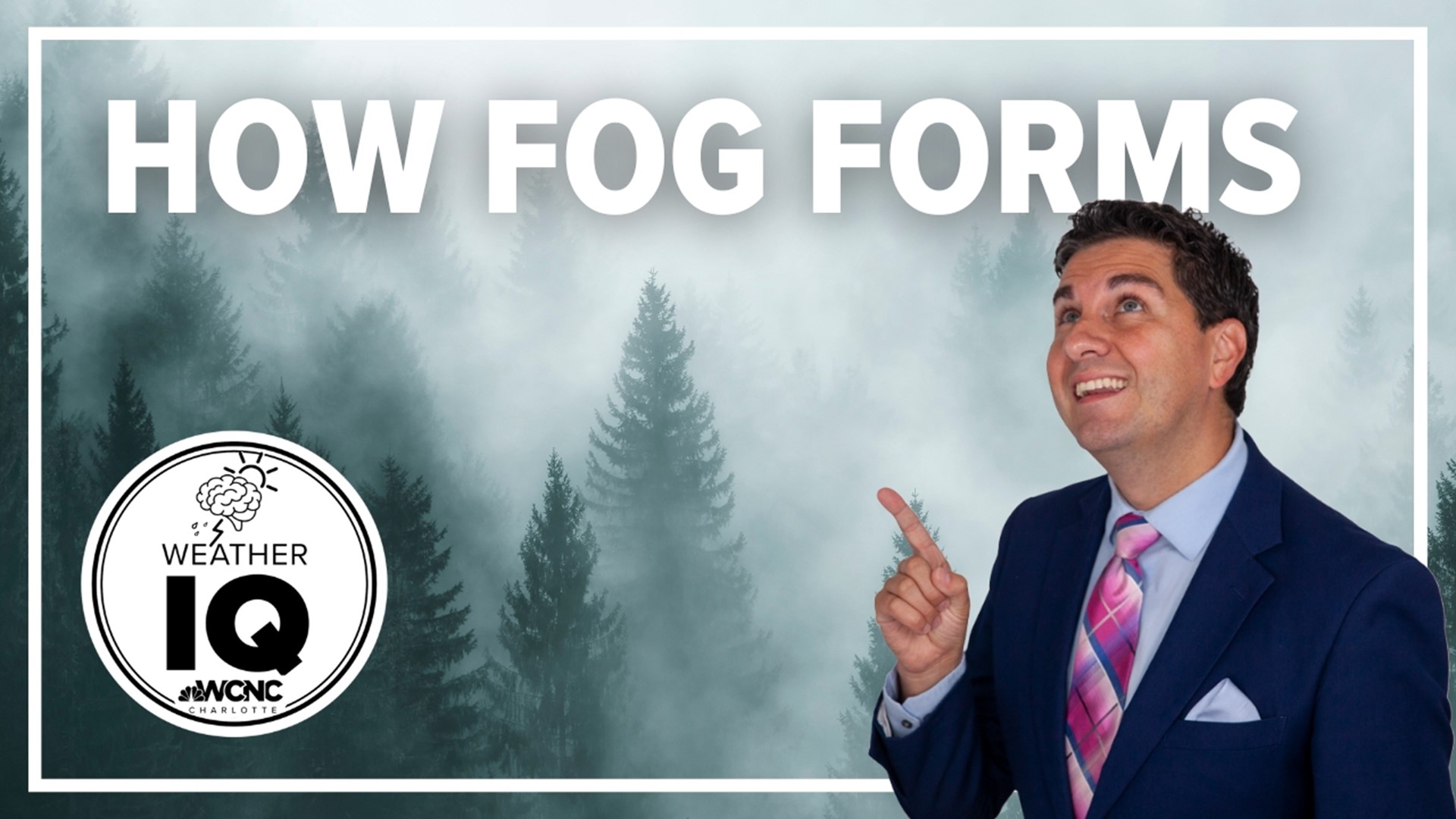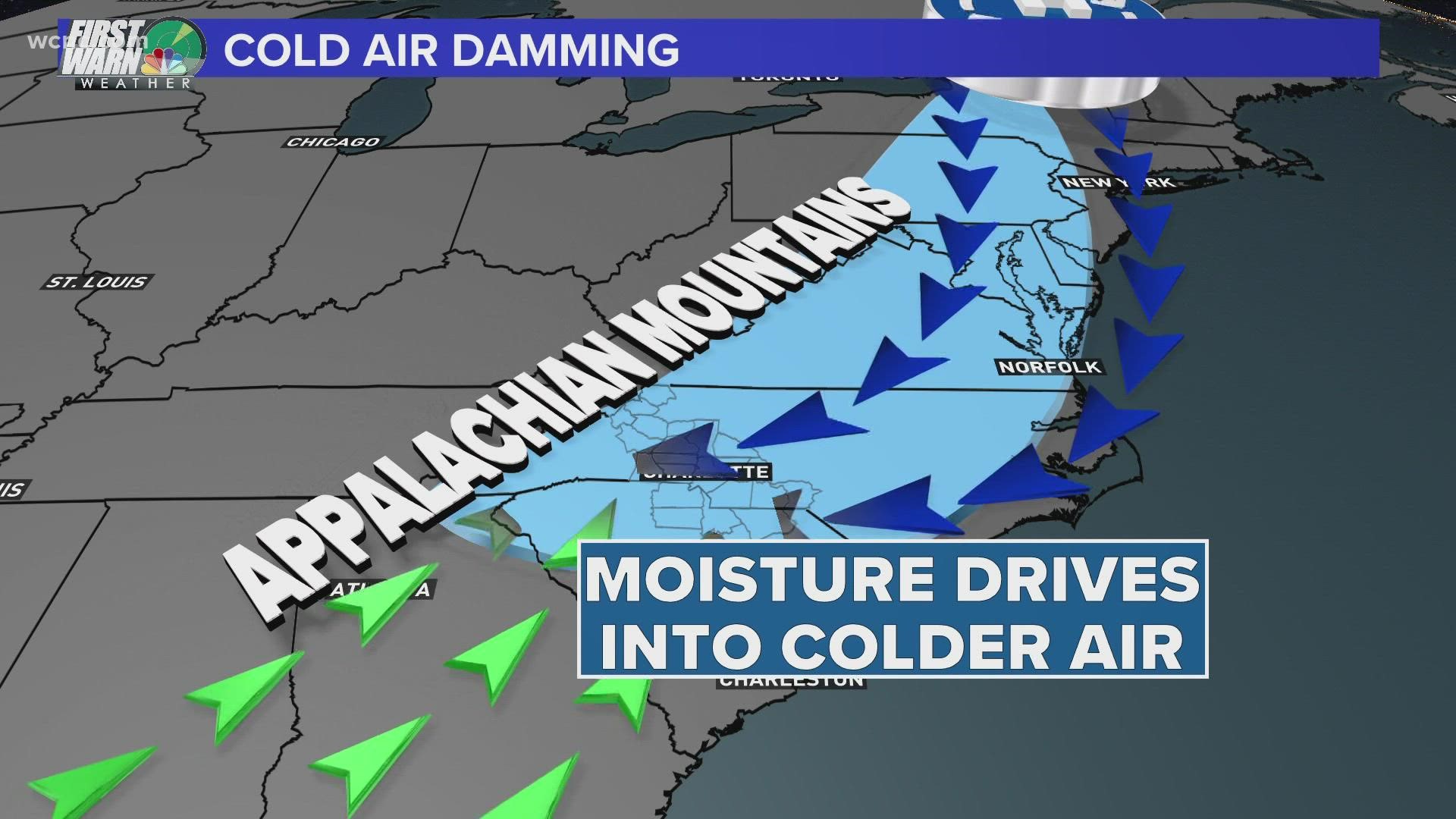CHARLOTTE, N.C. —
What is fog:
Fog is simply a cloud that touches the ground. Where depending on several factors can lower visibilities down to zero making it nearly impossible to see in front of you.
Interesting Fact: Fog droplets are extremely fine where you can fit 1 billion fog droplets into a team spoon.
Typical fog ingredients:
- A wet ground where water evaporates into water vapor and then condenses into fog.
- A clear sky. A clear sky allows the temps to maximize their cooldown which enables the atmosphere to become completely saturated. Or max out relative humidity.
- Calm winds. A strong breeze will break up the fog. It needs a calm wind or light air to allow it to build in place.
The most common type of Fog is Radiational fog and is what we commonly see in the Charlotte area. Other types of fog can also occur.
Typical setup: Overnight, the heating from the day radiates upward and when you have a moist surface, water evaporates into water vapor and condenses. Clear skies allow this process to happen freely and most effectively. When the winds are calm, the fog just sits there. And when winds pick up, they can disperse the fog.
Other types of fog:
Advection fog: Advection means the transport of air horizontally. When warm moist air rides over a cool surface, fog is formed. This fog is most common on the Pacific Coast. This is the fog you see around the Golden Gate Bridge.
Valley fog: this is appropriately named and happens usually during winter. When the Mountains cap the airs lift fog gets trapped in the lower elevations or the valley.
Freezing fog: this is when simply the fog droplets form and freeze onto solid surfaces. The National Weather Service will issue a Freezing Fog Advisory if this happens.
Cold air damming
Cold Air Damming, sometimes called the CAD or the wedge, traps overcast, cold and damp conditions against the Appalachian Mountains. The mountainous boundary dams the air into a wedge that protrudes into western North Carolina and upstate South Carolina. Those conditions can persist for days and keep places like Charlotte dark and gloomy.
The wedge is made of a cold, dense air mass, which is heavy. This causes it to settle down toward the Earth's surface. This is similar to how water and oil separate in a glass: water sinks to the bottom as oil rises to the top.
Much like radiating fog or advection when warm air moves in to attempt to break up the wedge, fog can be produced.
Fog's worst enemy:
And lastly, fog's worst enemy is the sun. Fog is usually gone by the afternoon because the sun warms it in the morning, causing it to rise and then dissipate.


